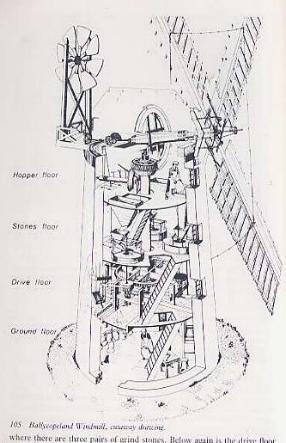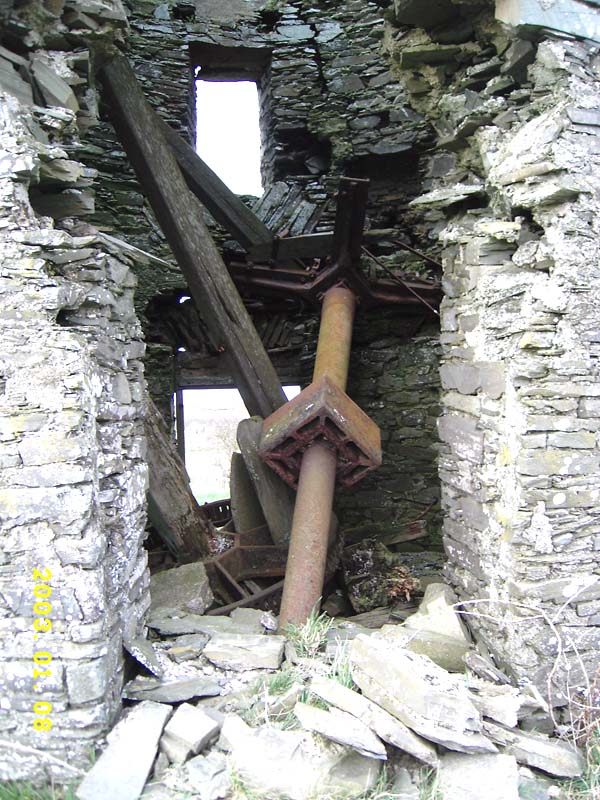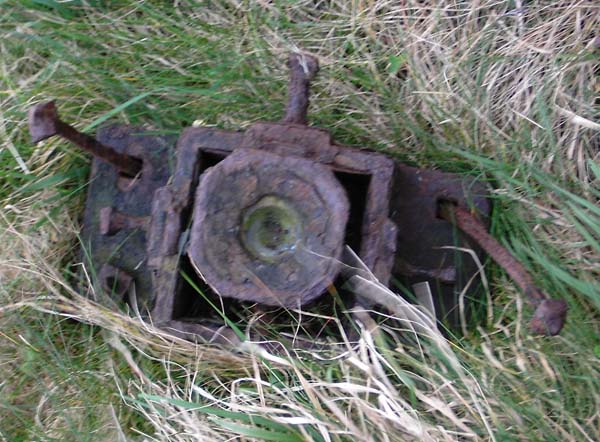Sheeplands windmill was built some
time around 1810 it was what is termed an under drift mill,
which means the pairs of stones of which there were three were
driven by the great spur wheel from below the stone floor.
windmill was built some
time around 1810 it was what is termed an under drift mill,
which means the pairs of stones of which there were three were
driven by the great spur wheel from below the stone floor.
Windmills and watermills
of the 16th to 20th century's broadly speaking operated on the
same principals with the exception of their method of motive
power.
The stump of the windmill
stands 7.6 meters (25 feet) high and has an inside diameter
of 4.6 meters (just over 15 feet)
Click here
or the image on the left for a cutaway image of Ballycopeland
Windmill which is very similar in design and layout to Sheeplands
Windmill, although Sheeplands doesn't appear to have had a fantail
to turn the mill into the wind, this would have been done by
hand.
Please note this mill is
on private ground, is not open to the public and is in a dangerous
condition.
Sheeplands Windmill from a 1930's
photograph

Windmill main shaft to which
the four sails were attached.

The great spurwheel beneath the
main shaft this drove the three "Stone Nuts" cogs
which drove the grindstones

Part of the tentering gear used
to adjust the fitness of the flour. the end of the shaft which
carried the upper stone ran in this cup bearing, adjusting its
height altered the gap between the stones therefore the fineness
of the flower produced.

Bearing plummer block this may
have carried the outer end of the main shaft, within this cast
iron casing would have been a bronze bearing.
